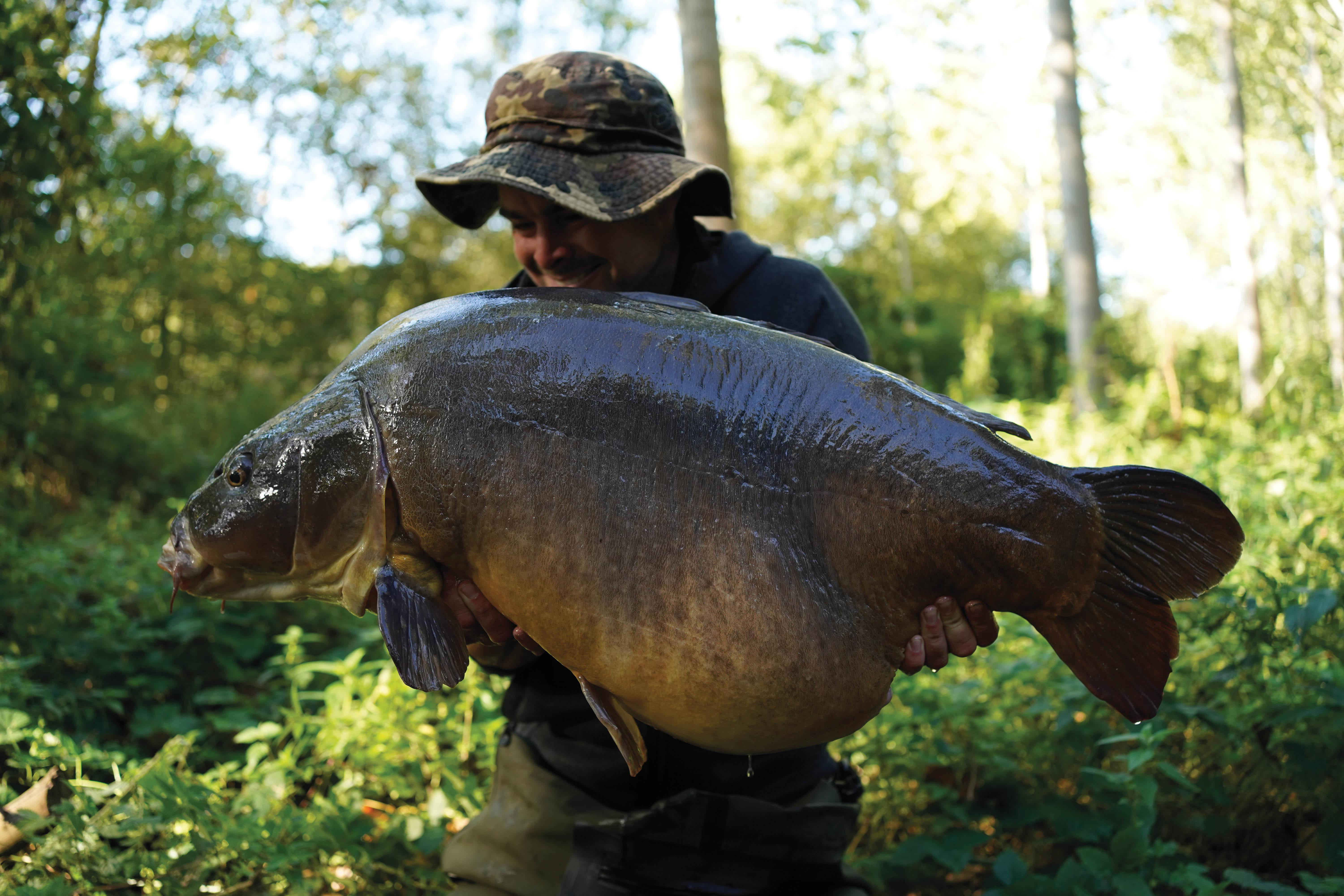Rig Evolution: Then and Now
James Armstrong goes right back to his early days on the bank to recall how, who and what has influenced his choice of terminal arrangement...
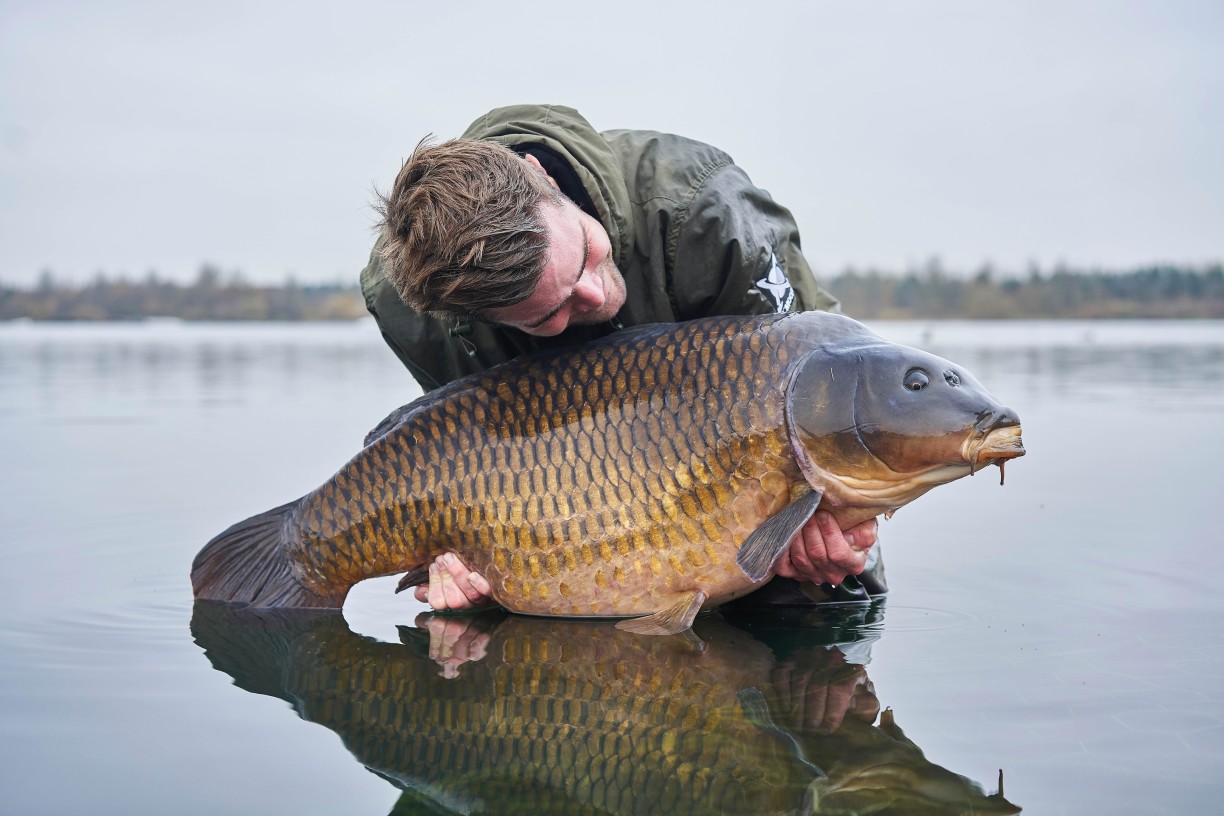
Having worked in the trade for nearly 20 years, and having fished since I was a whippersnapper, I have seen, used and experimented with a plethora of rigs and systems. Here I reflect upon the tweaks made and experiments conducted during the course of my fishing and media years, and how I’ve settled on just a few attributes that I feel makes a successful rig and system.—JAMES ARMSTRONG
Lesson One - Mastering The Basics
The Wonder Years
I started fishing at the tender age of eight, and went through my angling apprenticeship targeting bits and bobs with a float set-up or swimfeeder rig. I fished for roach, perch, bleak and the like on the river with my father. Local match hero, Justin, taught me about finesse and attention to detail. He showed me how to tweak my hook size and consider the diameter of my hooklink; a smaller bait, for example, would often equate to extra silvers on the bank.
These aspects were further drummed home when I had the opportunity to spend a day with Bob Nudd. An incredibly successful match angler, he went on to become individual World Champion no fewer than four times. Bob taught me how to bait accurately with chopped worm, and how to use incredibly light lines, coupled with tiny pole floats. Our session took place on the local canal stretch, one crisp, frosty winter’s morning, and to this day, I still use the same, albeit slightly tweaked method when using chopped worm.
When fishing for the species mentioned, I grew to appreciate just how important it was to adapt rigs to certain situations, whether fishing a size 20 hook and single squat for roach, or shortening the hooklink to outwit finicky-feeding tench that continually tugged at the swimfeeder. All these tweaks relate to what we do nowadays when fishing for carp. I learnt so much fishing for those smaller species, and I am sure it has all had a positive effect on my rig thinking today.
I actually used a Hair Rig for the first time whilst tench fishing. Looking back, it was a little Heath Robinson, but it worked well. Justin, who owned a little tackle shop in Newport Pagnell, showed me how he tied it. He used very light monofilament—Maxima, to be exact— and looped it onto a size 14 hook. The rest of the mono was then tied to the eye to form the Hair Rig. The set-up was around nine-inches long. A couple of grains of corn were slid onto the Hair, the bait being held in place by a short twig. Little did I know then, how big a part the presentation would come to play when I became more involved in the carp scene.
I fished for tench more and more, and also targeted bream, chub and barbel. My mind started to wander, though, and thoughts turned to even bigger fish, notably carp. My interest in match fishing waned, as did memories of my early silver-fish hunting. I wanted to go bigger!
Ken Farrant, a Cambridgeshire-based carp angler, whilst generally under the radar, was known to many old-school legends, and he took me under his wing. Ken, who unfortunately passed away last year, worked with my father at a manufacturing company in Northamptonshire, and was one of his pals. He became aware of my passion, and my desire to catch bigger fish, given the many stories my old man used to relay to him at work.
Ken soon had me fishing one of his runs waters. I remember using his Orbiter rods, Shimano Triton Sea Spin reels and Delkim-conversion alarms, and bringing in carp after carp from a pretty, lily-filled pond. I loved every minute of it and began to ask questions such as “What is that huge lead weight, and what’s the rubber tubing behind it?” or “Why would you use that?” and “Why can’t I just hook the boilie straight onto the rig?”
Ken, of course, replied and elaborated in great detail. He was an astute, quite serious kind of fella. Everything he did, he did properly, and no stone was left unturned. I listened to his every word, and a carp angler was well and truly born!
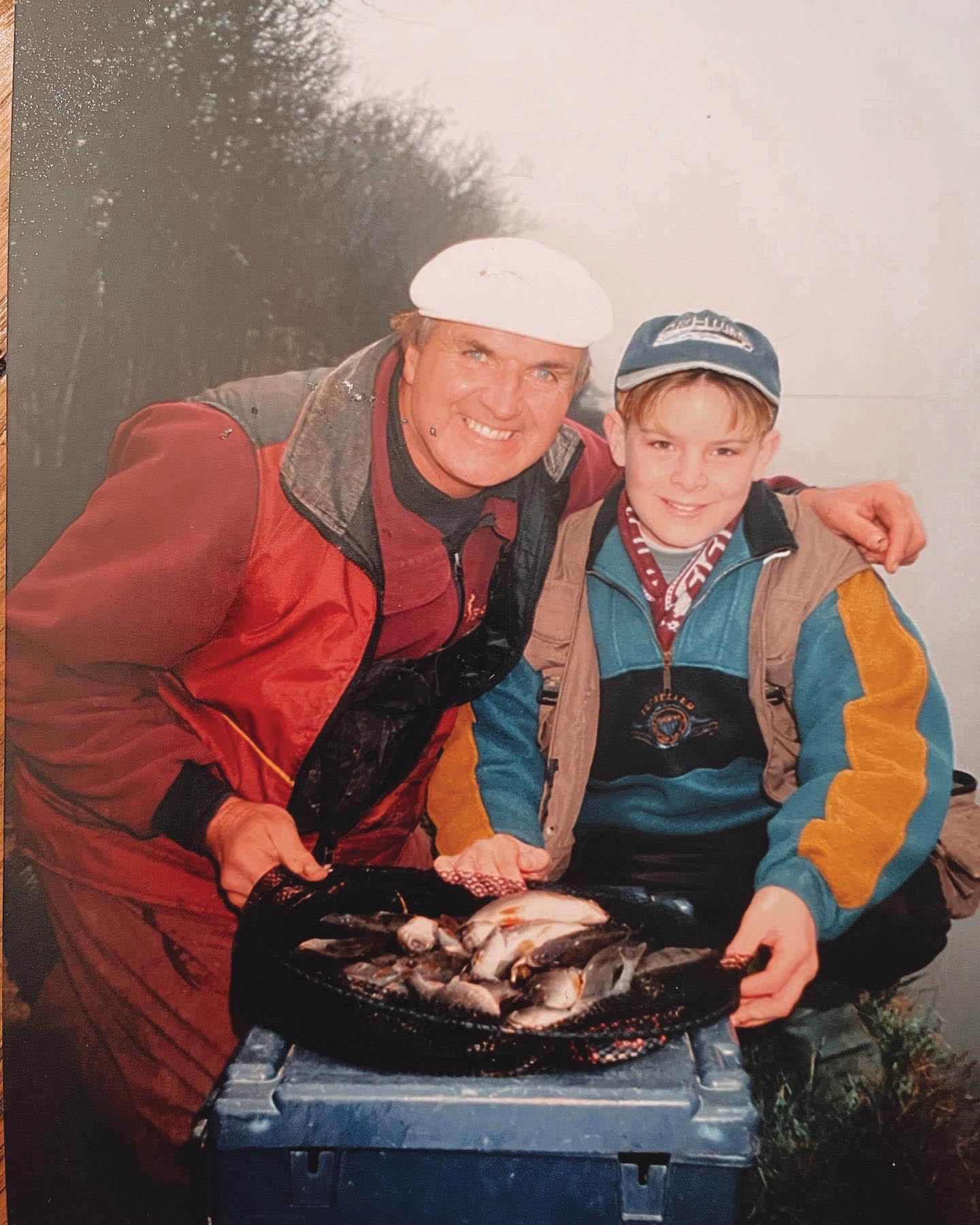
Lesson Two - A Whole New World
Off to the Tackle Shop…
I can’t remember exactly how old I would’ve been, but I was earning a few pounds delivering papers around the village, and that saw me able to purchase my first few rig bits from Sportmans Lodge in Wolverton—with a little help from Mum and Dad, of course. I hopped on the bus with my old mate, Mark Austin, and soon enough, we were greeted by a plethora of carp tackle. The shop of our dreams was unlike any other we’d set foot in. I vividly remember the Kevin Nash, Carp ’R’ Us and ESP display racks, all filled with wonderful carpy products. I can’t remember exactly whether it was at this time that I saw them, but I’m sure Korda had only recently started selling a few bits.
We were bemused, to say the least, and given our obvious expressions of confusion, the shopkeeper came over to help. Having received advice from him to complement some of Ken’s, I left Sportmans Lodge with a bag filled with tackle. One lesson I learned around that time that I still carry to this day and pass on to others in my tutorials, is that simplicity is key; so many rigs are hybrids, pretty much, of each other.
I walked out with a lead system to try, and some ready-tied Hair Rigs, complete with size 6 hooks. They were inline presentations with tubing used on the leader—really thick stuff. The hooks were similar, again: really thick. They were also shiny and particularly blunt, not that I would’ve noticed it at the time. They were like sea hooks compared to what I was used to. I think they were produced by a company called Margin Tackle. It really was cheap and cheerful stuff, but for a schoolboy, it was affordable. I bought a bag of Kevin Maddocks’ crab-flavoured boilies, too. The 500g bag would last me weeks, right? I laugh, looking back, as I wasn’t to know that such a bag should barely last a day.
I remember that the rigs didn’t even have a dedicated Hair, not as we’d recognise today. They featured thick rubber, and serrated and barbed spikes which you pushed into the boilie in order to hold it on. I split loads of baits trying to attach them, but it was all a learning curve… and boy, did I learn!
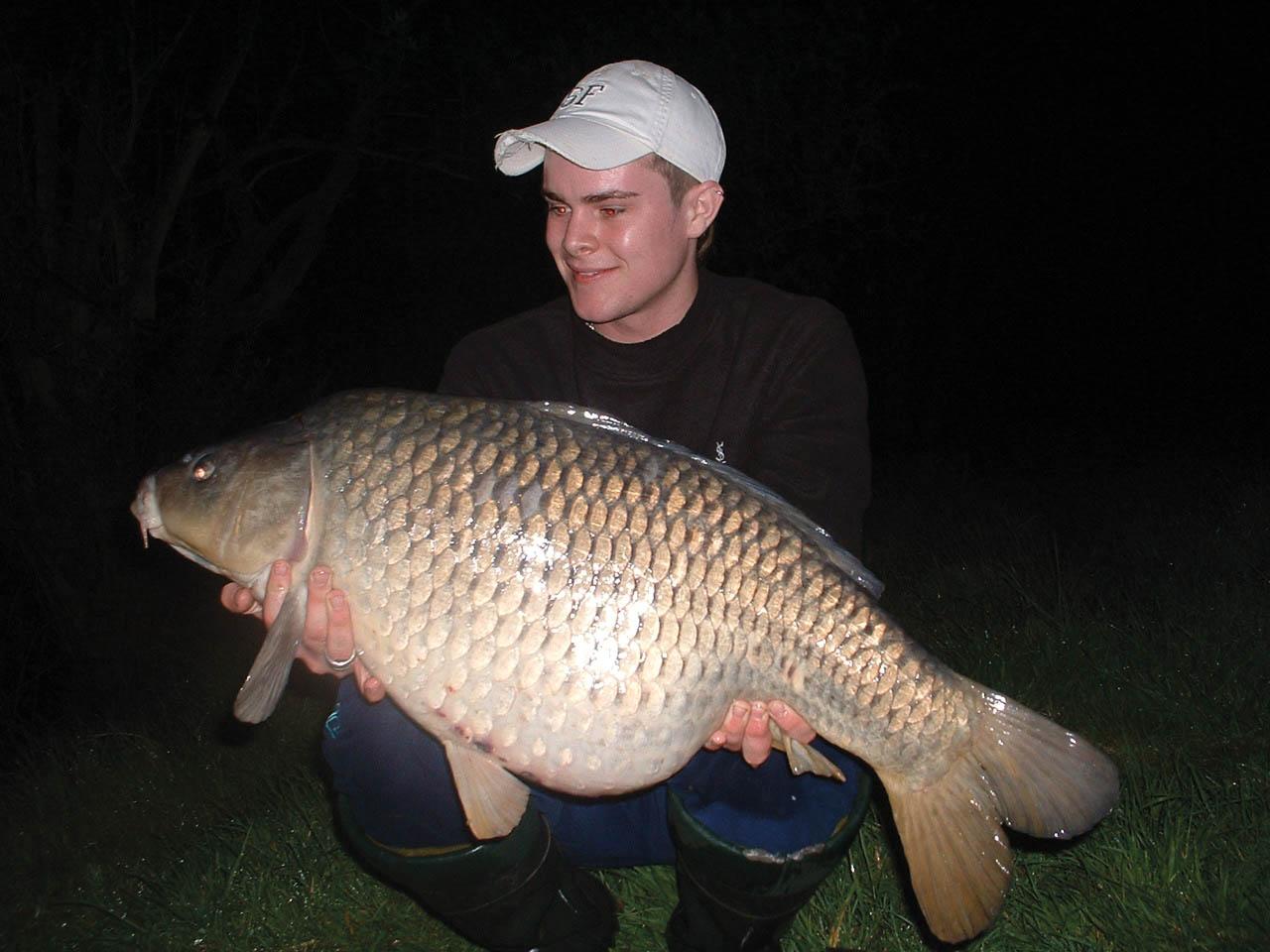
Lesson Three - Pushing The Boundaries
The Learning Curve
We visited Furzton Lake in Milton Keynes any time we could: after school, at weekends, and sometimes during school time, when we obviously shouldn’t have done. At the time, Furzton seemed like an inland sea. It’s around 60-acres in size and a busy park lake that bikers, dog-walkers, screaming kids and more all visit. The water played a massive part in my learning about rigs, and how I needed to adapt them to certain situations.
A large part of the lake is out of bounds, and we soon learned that, as a consequence, the resident carp spent a lot of their time in that area. We established it as such after seeing huge plumes of coloured water, tail patterns and fish showing regularly there… they were always there!
With a swim located nearest the out-of-bounds area, my mate Mark and I would naughtily walk our rigs 200yds or so up and over the bridge, along the bank and into the shallows which were strictly out of bounds. I’d have a rig in my hand whilst Mark stayed in the swim and took up the slack line. Fishing at this range on such a windswept water required the use of big leads. We soon found this out on our first session, our 2.5oz inlines being regularly pulled from the spot either as we tried to tighten our line or when the wind picked up. Straight away, we’d learned a lesson, and even now I rarely use much less than a 4oz lead, just because it gives me peace of mind on some of the big lakes I fish. The Hair Rigs worked a treat. Even though the hooks were a bit blunt, the big leads probably helped pull them home.
We’d found a rig that worked and we stuck with it on Furzton for a few years. We caught hatfuls of carp to just over 20lb. I even made the headlines in the sports section of the Milton Keynes Citizen: ‘Jason Armstrong with huge Furzton Haul’. Yep, JASON Armstrong! How gutted was I? I have the clipping in the loft somewhere and it still makes me laugh.
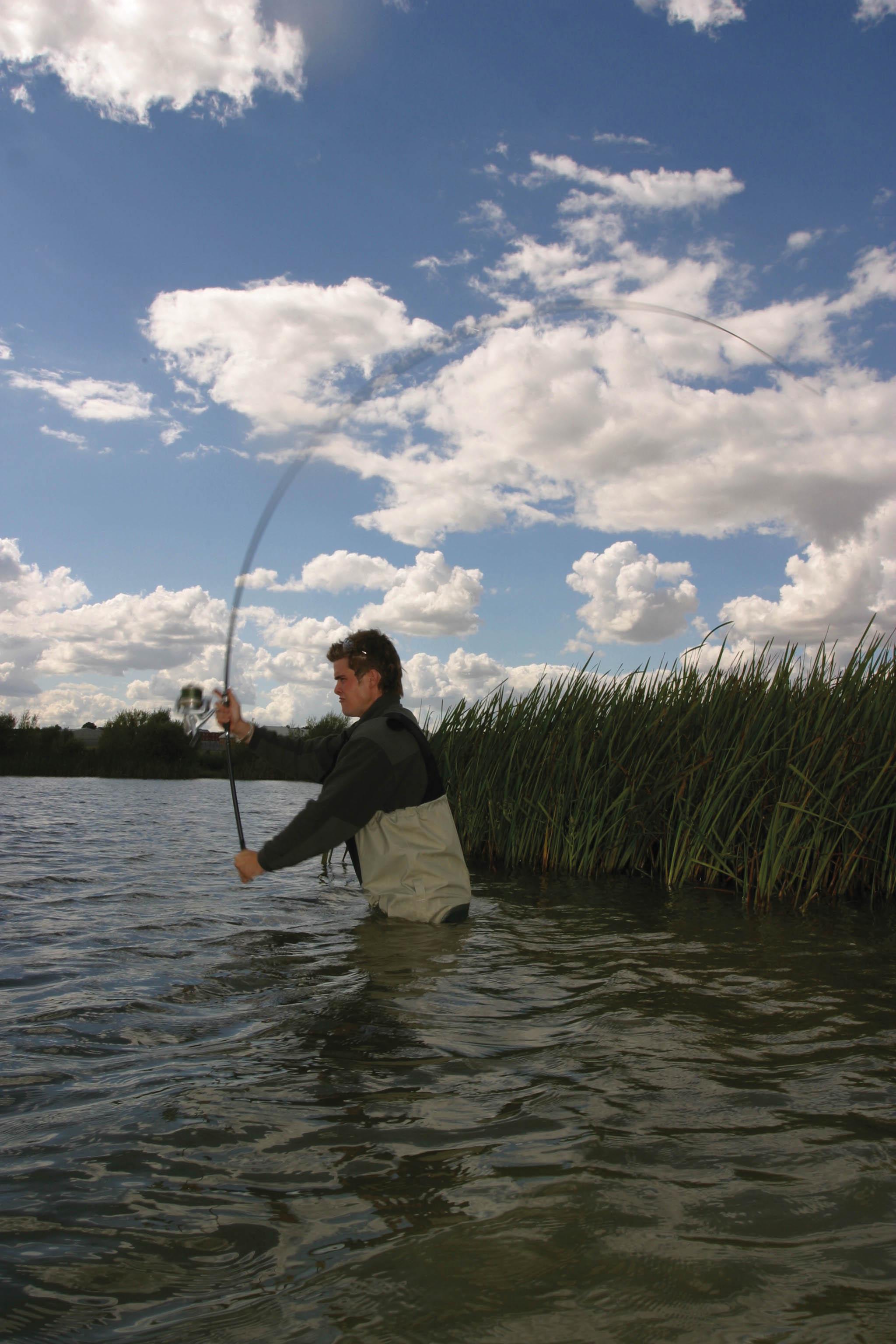
Lesson Four - A Keen Carp Angler
A Carp Angler is Born
Furzton seemed to be where I really became a carp angler. I was still constantly in touch with Ken Farrant, too. I might well have had him on speed dial, as I used to ring him at work, just to chat to him about carp fishing. I’m not sure that he loved and appreciated it, deep down, or whether he saw me as a young punisher. Whichever it was, he was always generous with his time. and I will be forever thankful for that.
Fast-forwarding a few years, I developed very quickly into an incredibly keen carp angler, and I joined my first couple of syndicates: Dovecote and Linford Lakes in Buckinghamshire. These were two very good waters at the time. They attracted a number of great anglers and held some wonderful carp, too. On waters like these, rigs started to evolve. Around this time I was working for David Hall Publishing. I was surrounded by anglers, day in, day out, not only in the office, but when shooting features on the bank. I was fortunate enough to mix with some of the best in the game.
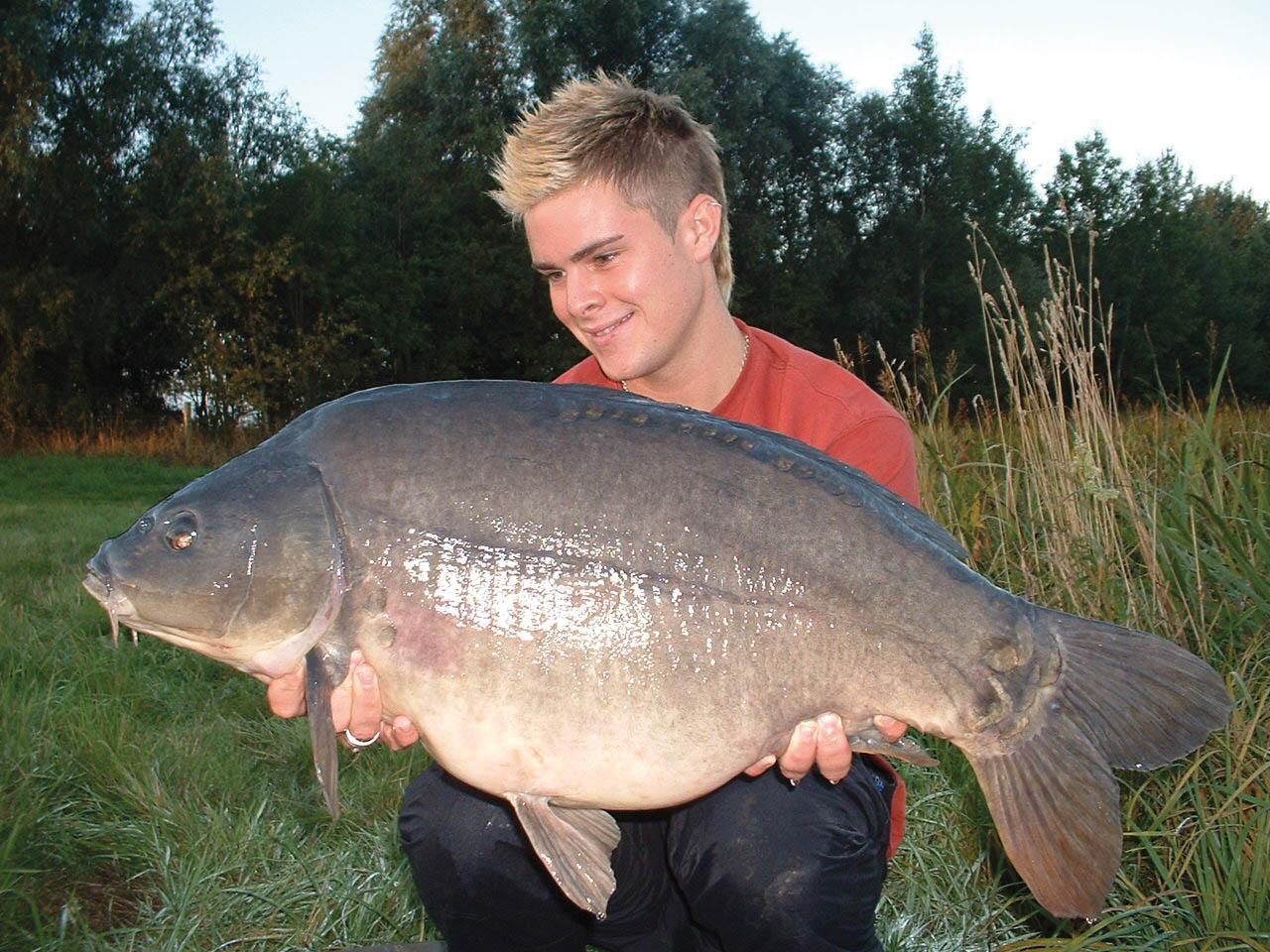
Lesson Five - Tangle Free
Rigs Need to Tick Three Boxes…
It wasn’t long before I discovered that only three things really mattered when it came to rigs. They had to be anti-tangle presentations, had to reset and be efficient hookers—which required the use of sharp hooks and big leads. Whilst shooting features with the likes of Adam Penning, Ian Russell and Dave Lane, it would’ve been incredibly easy to become influenced by them to such a degree that I might use a different rig every week. One thing I did pick up on, was that whilst all their rigs caught carp, the big common denominator was the effort they put in to catch them. They rarely tweaked much, because they knew that their rigs were effective and efficient; they just needed to be placed in areas where carp would feed, and use a bait the fish wanted to eat.
As a consequence, I tended to stick to a couple of tried-and-tested set-ups: the Blowback Rig, which I used as a Snowman Rig or with a pop-up, and the Chod Rig. I used appropriate materials and neither set-up would tangle. They would both also reset, and the carp found them hard to deal with.
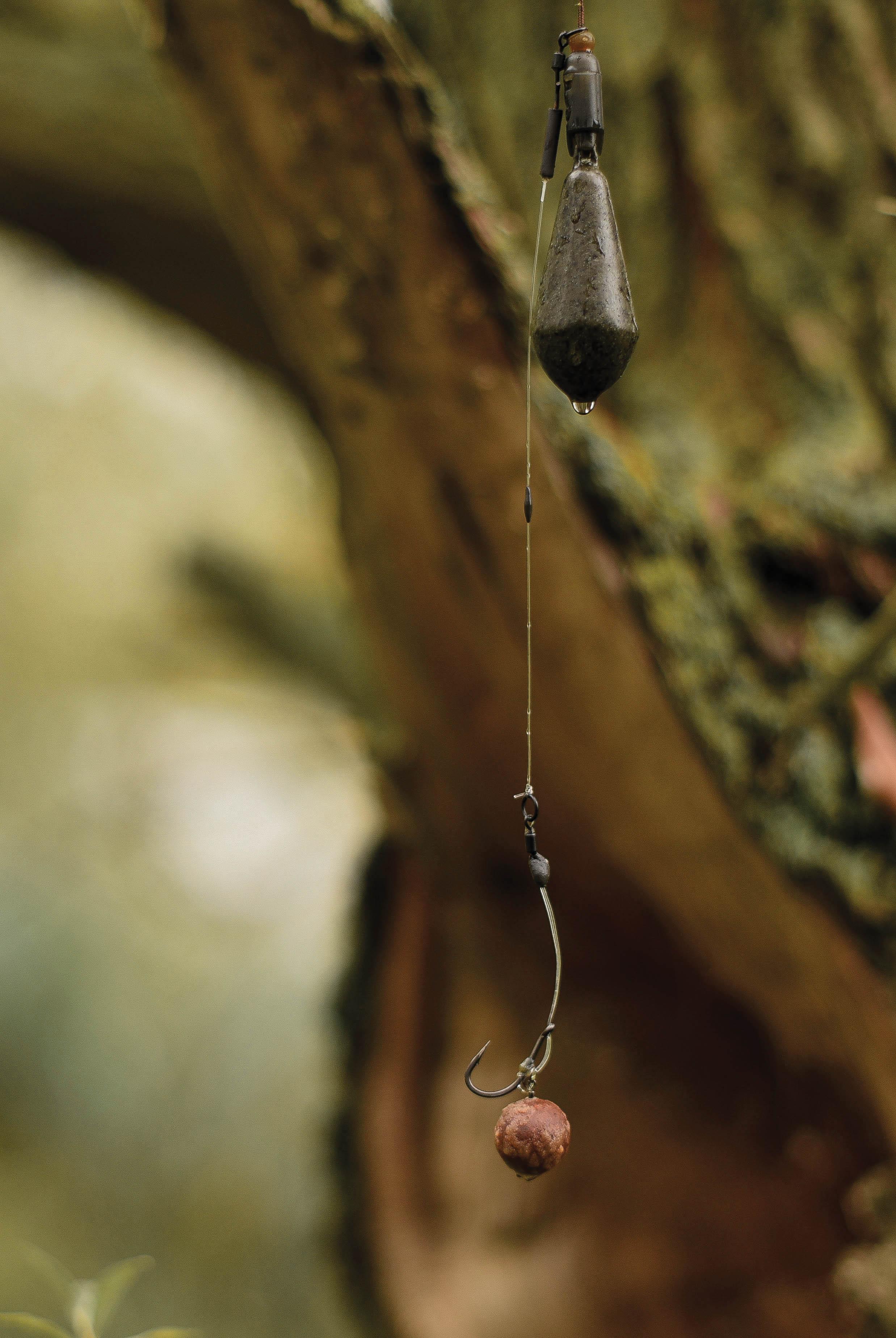
Lesson Six - My Favoured Set Up
The Blowback Rig
Although materials have evolved, my Blowback Rig components haven’t changed much. I’ve always favoured a combi-style set-up, and by that I mean a stiffer section that acts as a boom, and a slightly softer section for nearer the hook, be this in the form of a coated braid with a stripped back section, or fluorocarbon ‘Albrighted’ to soft braid.
My hooks of choice always featured an eye that kicks in, whether they had a sweeping shank with an inturned eye, or were wide gape and used with a shrink-tube kicker. My theory was that the extended shank flipped and the point caught hold as the carp panicked and bolted. The hook always boasted a ring that slid along the shank, to which a balanced bait was attached via a hair. This was the rig that worked well for me for ten years or so, and I guess the Multi Rig I use today is just a more efficient version of it. I used it with bottom baits, wafters and pop-ups, and enjoyed great success.
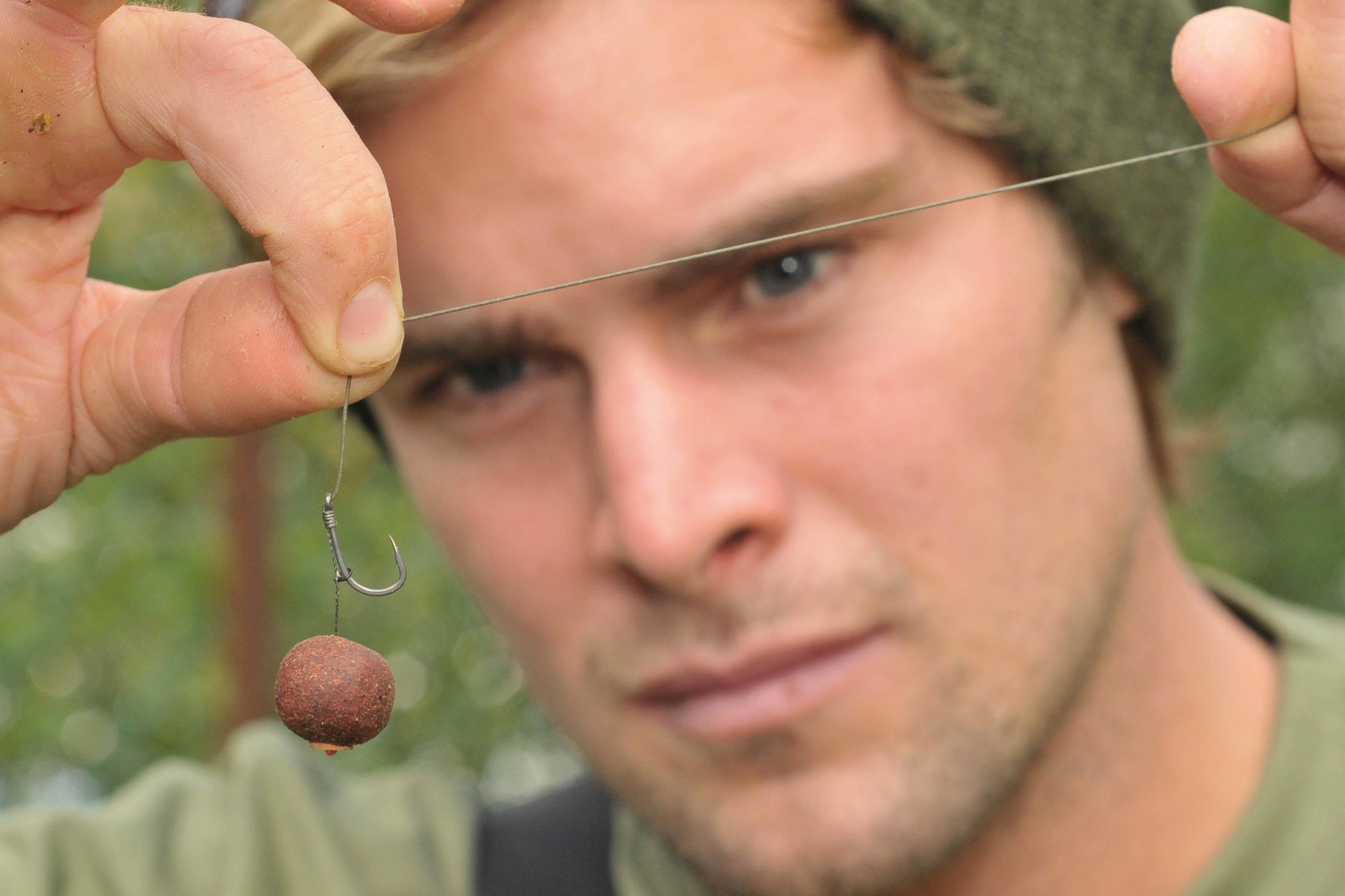
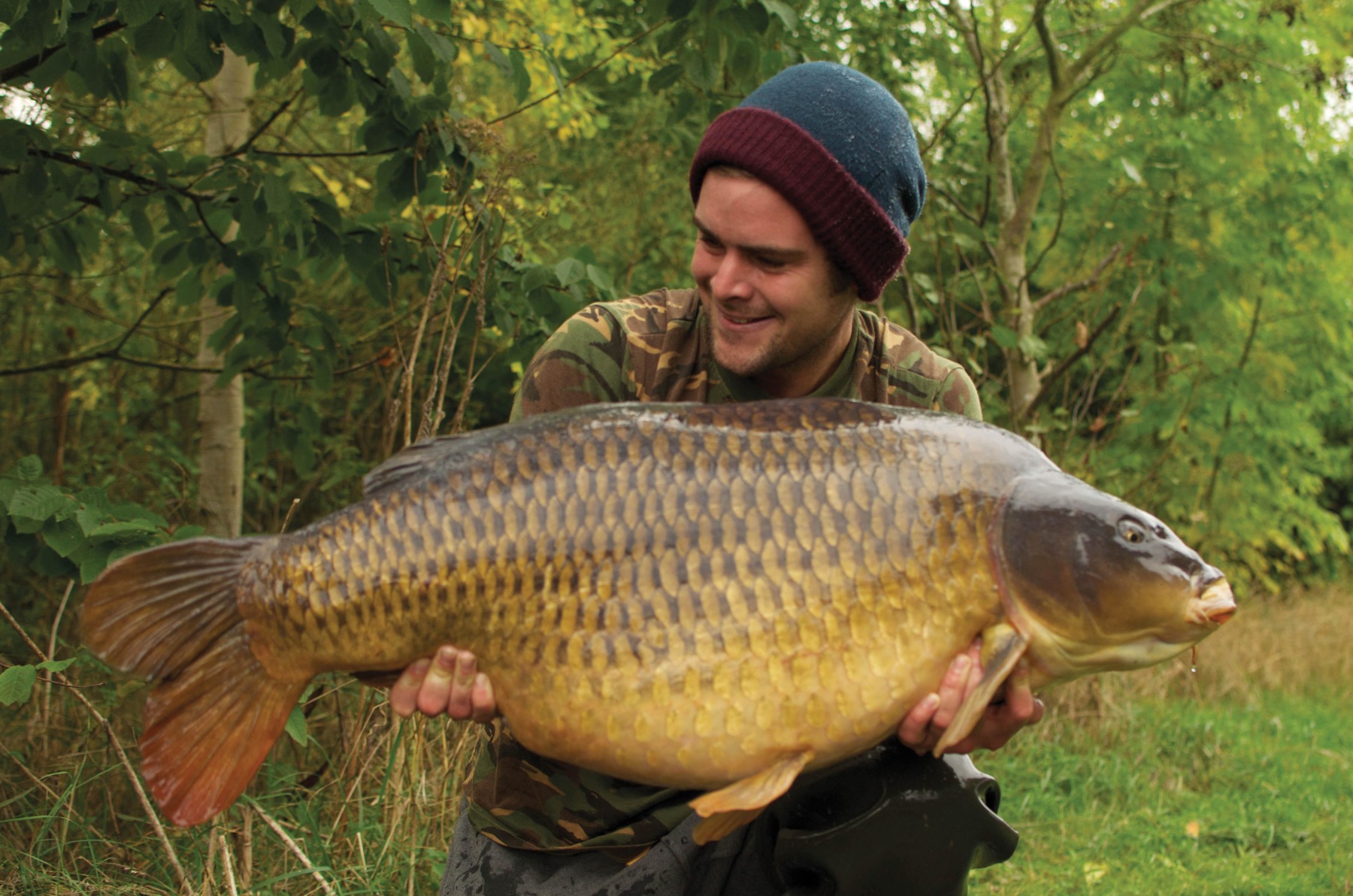
Lesson Seven - Hook Sharpening
Hayward’s Way
Hook sharpening is a subject that’s hugely talked about. Some love to do it and extol its virtues, and some
regard the practice with contempt; each
to their own.
I got to know Jason Hayward whilst shooting features for Advanced Carp Fishing. He had a huge influence on the way I fished, maybe not so much in terms of rigs, but certainly when it came to hooks. The hook is the most crucial component of a rig, in my opinion. Use a blunt one and you will catch nowhere near as many carp as you will with a sharp one: fact.
Way, way before sharpening tools, stones, vices and all the other malarkey hit the shops and became available, I learned how to hone my hooks to a sharpness far beyond that of any out a packet. For those who don’t know ‘Jase’, he doesn’t like to give too much away. What great angler does? After much persistence, however, he started to give me a few pointers. Before long, I ordered a fly-tying vice, Swiss precision pillar files and some Drennan Continental Boilie hooks in size 4. Over the next few months (during which I cut my fingers on numerous occasions, as some of my friends did theirs!), I learned how to hone a hook point so sharp, it was lethal. I would tie the fly-tying vice to my bedroom window sill and spend hours upon hours filling up hook packets with sharpened Contis. I also had a bin filled with those I’d tried to sharpen unsuccessfully. I went through so many hooks at that stage in my carp fishing, but I knew what a huge edge all my efforts gave me.
Using my hooks with Blowback Rigs and big leads, I was fortunate enough to catch some amazing carp, including Tyson from Hope Lake at a smidgen under 50lb, and a very special Leney linear from a quiet Cambridgeshire water. Some of these fish were notoriously difficult to catch, yet I caught nearly all of them in a very short space of time. Big
leads and sticky-sharp hooks were rig attributes, once again, that I still value greatly to this day.
I wouldn’t say I sharpen my hooks quite as much these days, mainly due to having access to Kamakuras. ‘Kamas’ are as good as hand-sharpened ones, if not better, straight out of the packet. If a lakebed is particularly hard, I sill still hone my hook, but to a slightly lesser extent.
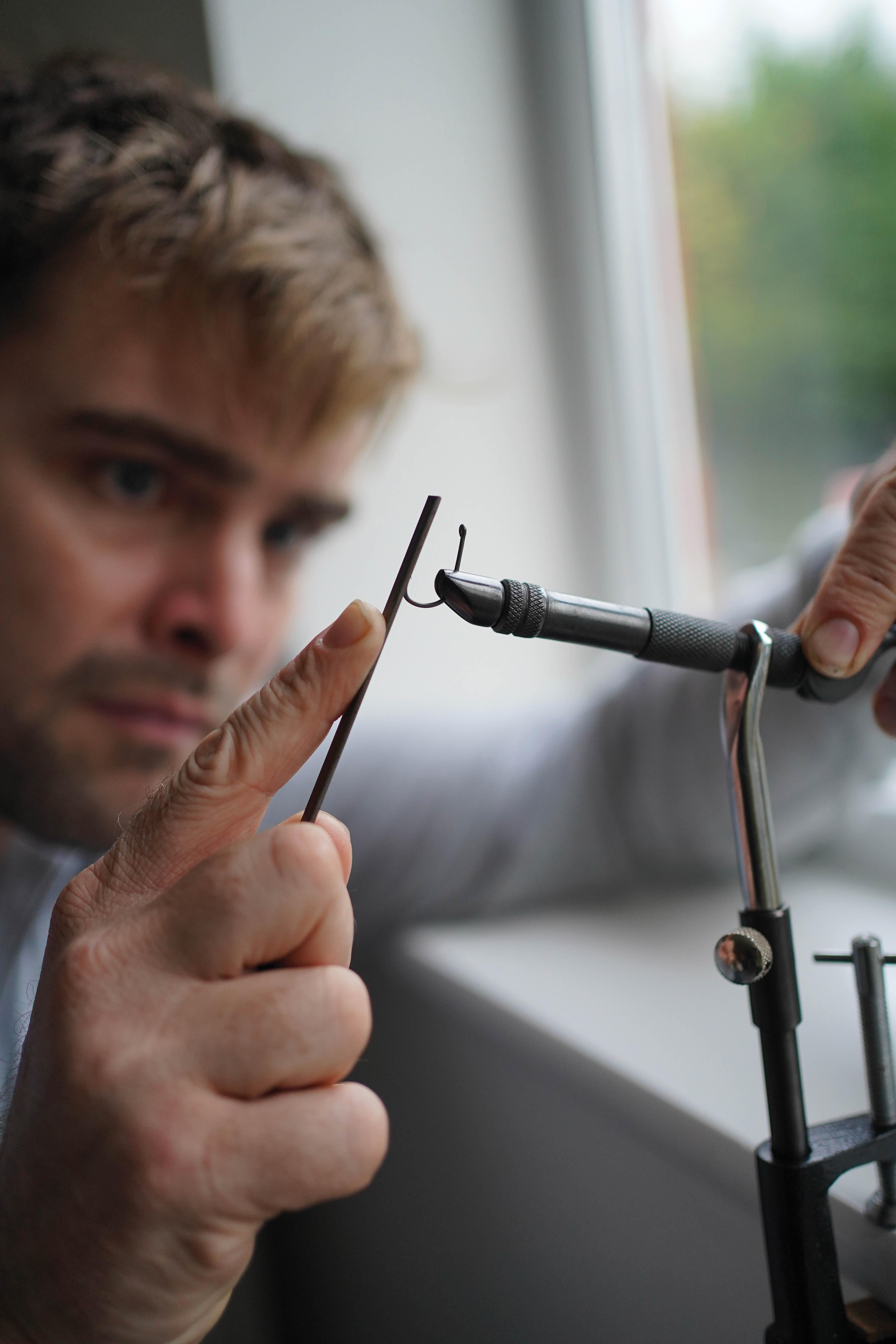
Lesson Eight - Influences
The Korda Effect
Working for Korda undoubtedly had a huge effect on the thinking behind my rigs. I was surely influenced there, as have, perhaps, some of the best anglers in the game. With such a team of talent around me, naturally I began to consider presentation, especially when watching carp spit out rigs left, right and centre whilst filming the early Underwater productions. One thing I came to learn that was a given, was that no rig would hook every single carp—if one did, our sport would be a bit boring. I saw KD Rigs, D-Rigs, Hinge Rig variations and the like during my years there. I tweaked arrangements and tried the odd different thing, but I always came back to the same principles: as long as they didn’t tangle, could reset and the hook was dead sharp, I’d be happy to use any of them. I stuck with my own set-ups, of course, and didn’t get too crazy and keep chopping and changing all the time.
Working with fantastic anglers at Korda, I saw many prototypes come and go. These included several hook patterns, but one has stood the test of time and has remained in my armoury: their Wide Gape. Even when not with Korda, having moved jobs, I’ve still used the Wide Gape, even on the quiet.
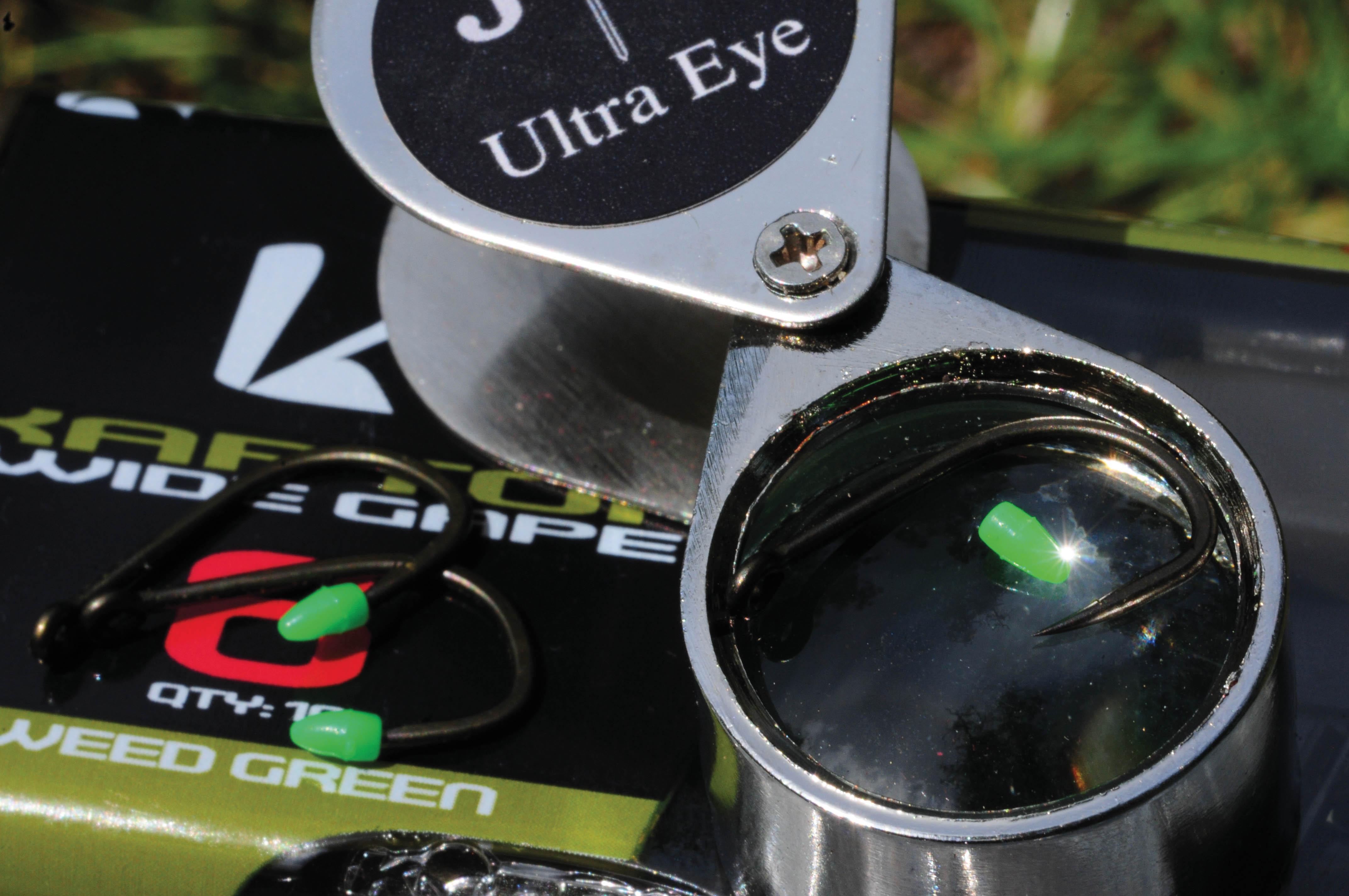
Lesson Nine - Most Reliable
The Wide Gape: Tahe Only Hook I Ever Need
Korda’s Wide Gapes are the most versatile and reliable hook I have ever used. I joined the company when I was 23 or 24 years old, so it’s a hook I’ve used for nearly 14 years now. After learning to sharpen hooks way back when, I switched mostly to those with a beaked point. Why? Because they are so much easier to sharpen. By taking off some of the meaty bit, you effectively make the point finer and sharper, and as a result, straighter. You actually end up with an almost straight-pointed wide gape. If you’ve ever tried sharpening a straight-pointed pattern, you’ll know just how tricky it is. It is possible, but it’s tricky and time-consuming.
I use the pattern now, and have done, for 90 per cent of my angling, whether I’m using a Spinner, or presenting a bottom bait on a Multi Rig, favouring either a Kamakura, or a standard but also sharpened version.
For all my pop-up fishing—again, mostly with Spinner Rigs—I opt for a Kamakura Wide Gape X. It lends itself fantastically to my chosen rig, and when kicked in with tubing, it creates a very aggressive angle. It also sits low on the lakebed—I’m not a huge fan of high pop-up rigs as I feel they can look alien to the fish.
Depending on the lakebed, I may use a Wide Gape straight out the packet and hone it myself, to a lesser extent than a Kamakura. Why? If the bottom is hard and gravelly, the fine Kamakura points may be just a little too sharp. By honing the hooks myself, I can still get the ultra-sharp points, but they will stay intact. As a general rule, then, it’s Wide Gape Kamas for pop-ups, and the the same or Wide Gape X ‘standards’ (but hand-sharpened) for bottom baits.
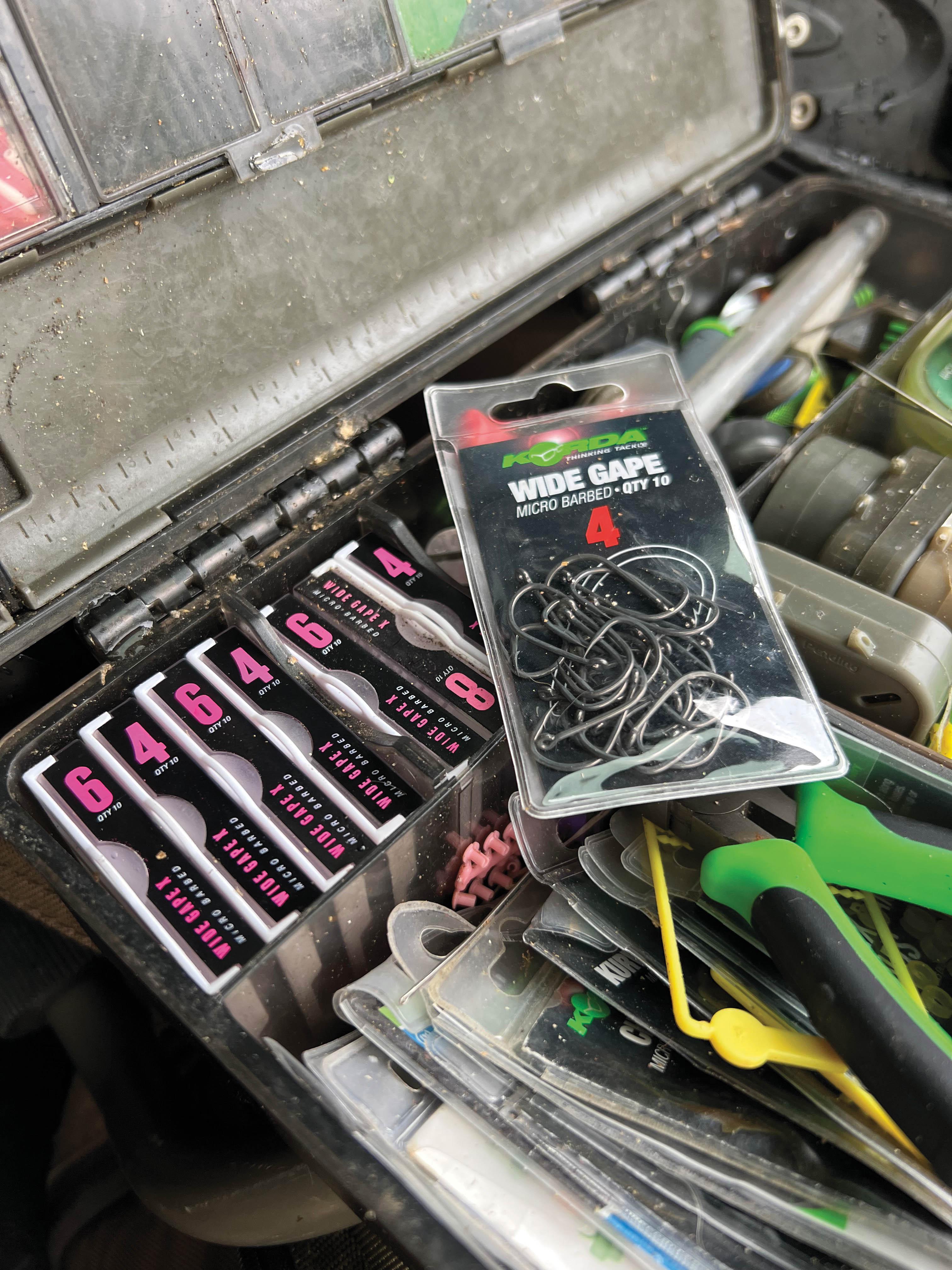
Lesson Ten - Rigs Of Today
Quick-Change Hook Rigs
Like many, and with time often of the essence, I quickly adopted two rigs that save time and hassle. Both allow for quick hook changes, perhaps in seconds. If you cast regularly and use sharpened hooks, you will find that they can ‘go’ easily, so by having a presentation that allows you to change them quickly and easily, you’ll spend more time fishing and less time tying new rigs.
I use the Spinner Rig for my pop-ups. It’s easy to tie, absolutely bombproof, doesn’t tangle, will reset, and you can change the hook in an instant—my three criteria are included again. I tend to use the Spinner on either a helicopter rig or a lead clip. I’ll go with a helicopter arrangement if I’m fishing over a slightly softer lakebed, and a lead clip over harder terrain. Whichever the situation, I’ll use a stiffish boom section. I want the rig to kick away from the lead on the cast and so eradicate tangles, and also as it descends to the lakebed. I’ve settled on 15lb Boom as my go-to material. If a fish ejects the rig after it has picked it up, again, it will reset easily.
My bottom-bait and wafter rigs follow exactly the same principles and I use the same hooklink, although I cut off the ring on the ring swivel, otherwise I find the bait can fold back on the hooklink. Also, rather than using a hook swivel to mount my bait on as I would with the Spinner, I form a soft ‘D’ using braid. My bait then runs along it and behaves more naturally, the modification offering a little more separation between hook and bait, something I prefer when the bait is on the lakebed rather than just above it, as it would when I’m using a pop-up. You’ll also notice that I don’t pull the bait all the way onto the swivel. Again, this results in a little more separation, just like a Hair Rig.
For me, this bottom-bait presentation harks back to the classic Blowback Rig, whereby the bait runs along the shank and the hook is kicked in at an angle. For me, they’re all very similar, and my preferred set-up has merely been adapted to make things hassle-free and to save some time—and it’s ever-evolving!
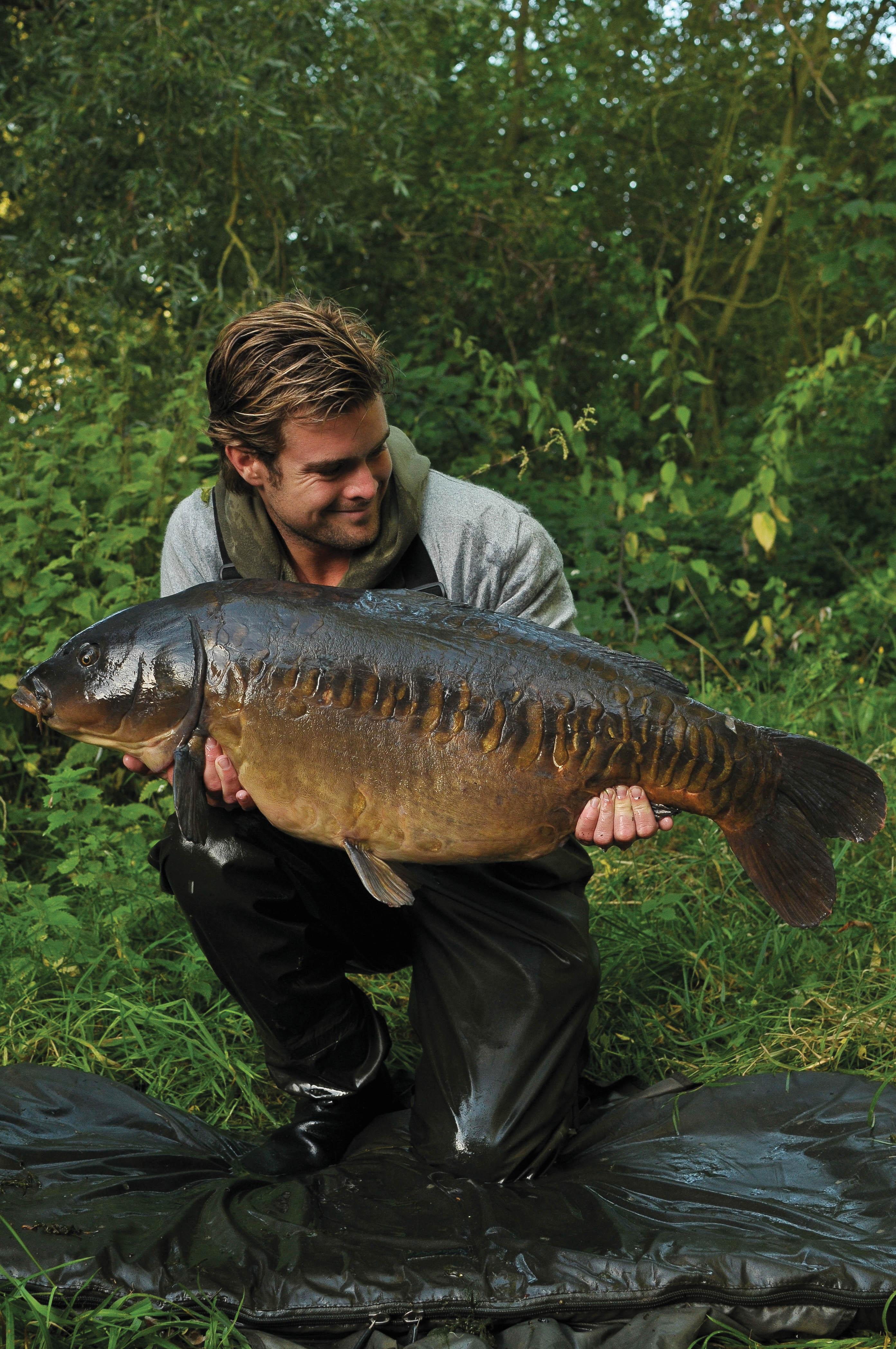
Lesson Eleven - To Summarise
Conclusion
Although my rigs have evolved over the years, I still follow the same original principles. They mustn’t tangle, must be anti-eject and have very good resetting capabilities. There are many, many variations of the Blowback Rig, the Hinge, etc., and to be honest, I’d be happy using any of them, as long as they tick the three boxes, meet my main criteria and can be used with the right lead system. It’s important to find out what works for you and to gain confidence in what you’re using. Then you can make small tweaks that you think will improve your chances of catching. Changing for change’s sake is a sure way of denting your confidence, and you’ll be left baffled. We’ve all been guilty of doing just that in the past, but I’ve come to learn that if your rig is fishing effectively and you’re on carp, you’re halfway there. Then, if your rig has an ultra-sharp hook, you’re even closer.
